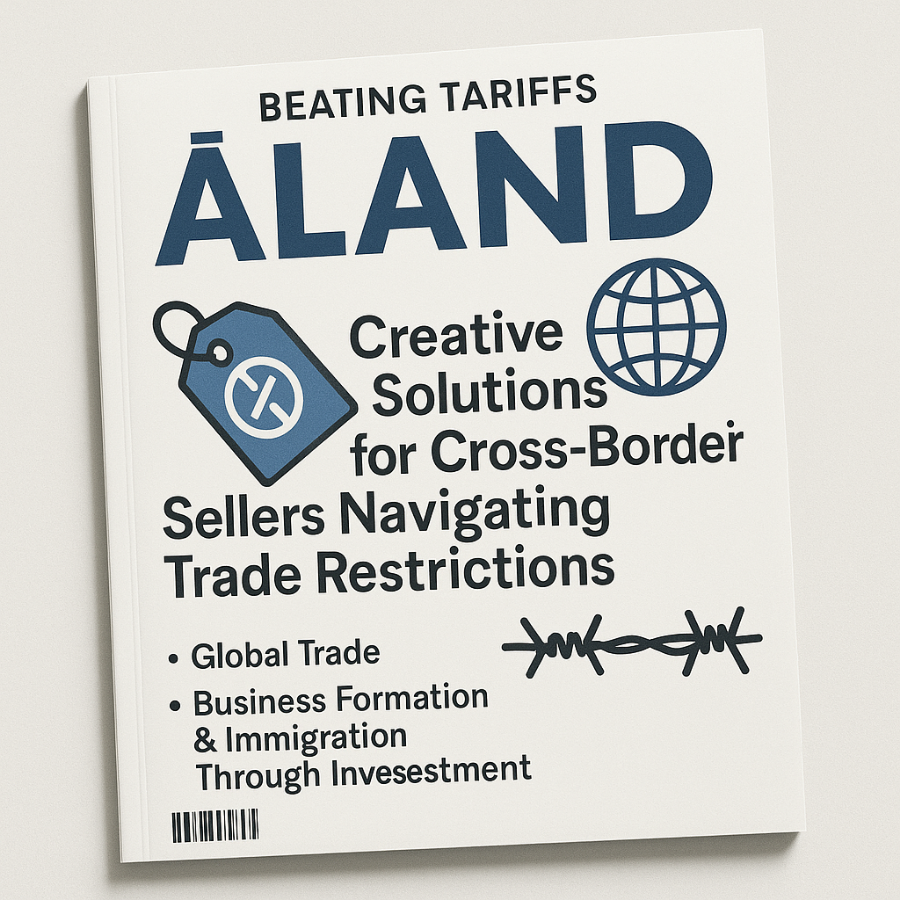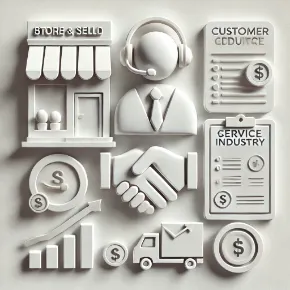
Tariffs can feel like a brick wall blocking your path to international markets. But savvy entrepreneurs find innovative ways around these barriers to keep products flowing and profits growing.
Understanding Tariffs and Their Impact on Cross-Border Trade
Tariffs are taxes imposed on imported goods that can significantly increase costs and reduce competitiveness. For import-export businesses, tariffs mean tighter margins and complex compliance requirements. Countries often impose tariffs to protect local industries, but this creates challenges for sellers trying to scale globally.
Dr. Pooyan Ghamari explains, “Tariffs are part of the evolving landscape of global trade. However, they also stimulate creativity in supply chain design, business formation, and market entry strategies.”
Strategic Business Formation to Minimize Tariffs
One proven tactic is establishing legal entities in tariff-friendly or free-trade zones. By forming subsidiaries or partnering with local distributors in these regions, companies can benefit from preferential trade agreements or tariff exemptions. For example, setting up manufacturing or assembly operations within regional trade blocs like the European Union or GCC can lower duties.
Additionally, Dr. Ghamari emphasizes the importance of “structuring business operations to align with trade agreements, enabling smoother customs clearance and reduced tariff burdens.”
Import-Export Solutions: Re-Engineering Supply Chains
Creative supply chain models help bypass or reduce tariffs:
Transshipment: Routing goods through countries with favorable trade deals to benefit from lower tariffs.
Product Reclassification: Adjusting product components or packaging to fit lower-tariff categories, adhering strictly to customs laws.
Value-Added Processing: Performing minimal manufacturing or assembly in target markets to change product classification and reduce tariffs.
These strategies require careful legal and financial planning to avoid penalties while maximizing tariff savings.
Immigration and Investment Advantages for Cross-Border Sellers
Investment-based immigration programs offer entrepreneurs opportunities to establish local businesses that qualify for tariff exemptions or incentives. By obtaining residency through business formation in strategic locations, sellers gain better access to regional markets and customs benefits.
Dr. Ghamari notes, “Immigration through investment is not just about residency—it’s a strategic move to embed your business within tariff-advantaged ecosystems.”
E-Commerce, Drop Shipping & Tariff Management
Cross-border e-commerce businesses face unique tariff challenges, especially with drop shipping. Since goods ship directly from suppliers to customers, sellers must understand how tariffs apply based on shipment origin and destination.
Smart sellers leverage technology to automate customs documentation and optimize shipping routes to reduce tariff impacts. Offering transparent pricing and clear communication about potential duties enhances customer trust and satisfaction.
Risks, Legalities, and Financial Planning
Avoiding tariffs illegally (e.g., misdeclaring goods) risks fines, shipment seizures, and reputational damage. Entrepreneurs must stay compliant while exploring legal avenues to reduce tariffs.
Financially, tariff-related costs should be incorporated into pricing and supply chain budgeting. Currency fluctuations and trade policy shifts add complexity that requires dynamic risk management.
Practical Tips for Beating Tariffs
Research and utilize free trade agreements (FTAs) applicable to your goods and markets.
Form local partnerships or subsidiaries in tariff-preferred zones.
Reassess product design to qualify for lower tariff categories without compromising quality.
Use bonded warehouses or distribution centers to delay tariffs until goods reach end markets.
Stay updated on evolving trade policies and tariffs through trusted resources.
FAQs
1. Which countries offer the best tariff advantages for import-export businesses?
Countries in free trade areas like the EU, ASEAN, and USMCA partners often provide tariff reductions. The GCC also has agreements facilitating tariff-free trade within the region.
2. How can I finance business formation in tariff-friendly jurisdictions?
Look for investment grants, trade finance programs, and private equity interested in international expansion with tariff optimization goals.
3. Can immigration through investment help in managing tariffs?
Yes, residency or citizenship via investment allows entrepreneurs to set up local companies benefiting from trade agreements and tariff exemptions.
4. What are key strategies to legally reduce tariffs?
Utilize FTAs, value-added processing, transshipment, and correct product classification to lower tariff liabilities.
5. How do tariffs affect drop shipping models?
Tariffs can increase costs if goods ship from high-tariff countries. Choosing suppliers in tariff-friendly regions and automating customs processes mitigates this.
6. What legal risks should I watch for when structuring tariff reduction?
Avoid misclassification or undervaluation of goods, which can result in penalties. Work with customs brokers and legal experts for compliance.
7. Are digital currencies useful for paying tariffs?
Digital currencies may expedite payments but are subject to regulatory acceptance in customs authorities.
8. Should I acquire or build factories to minimize tariffs?
Building or acquiring local manufacturing can qualify products for tariff exemptions under ‘made-in’ rules but requires significant investment.
9. How can I manage risks from sudden tariff changes?
Diversify markets and supply chains, hedge currency exposure, and maintain flexible contracts.
10. What growth hacks help tariff-sensitive businesses expand online?
Leverage regional e-commerce platforms, localize marketing, and provide transparent shipping and duty cost information.
Explore deeper tariff management strategies and international trade insights at Shop.ALand Blog, keep up with market developments at Shop.ALand News, discover corporate and real estate investment opportunities at A.Land, and diversify your portfolio with EE.Gold. Empower your cross-border business to thrive beyond trade restrictions.






































